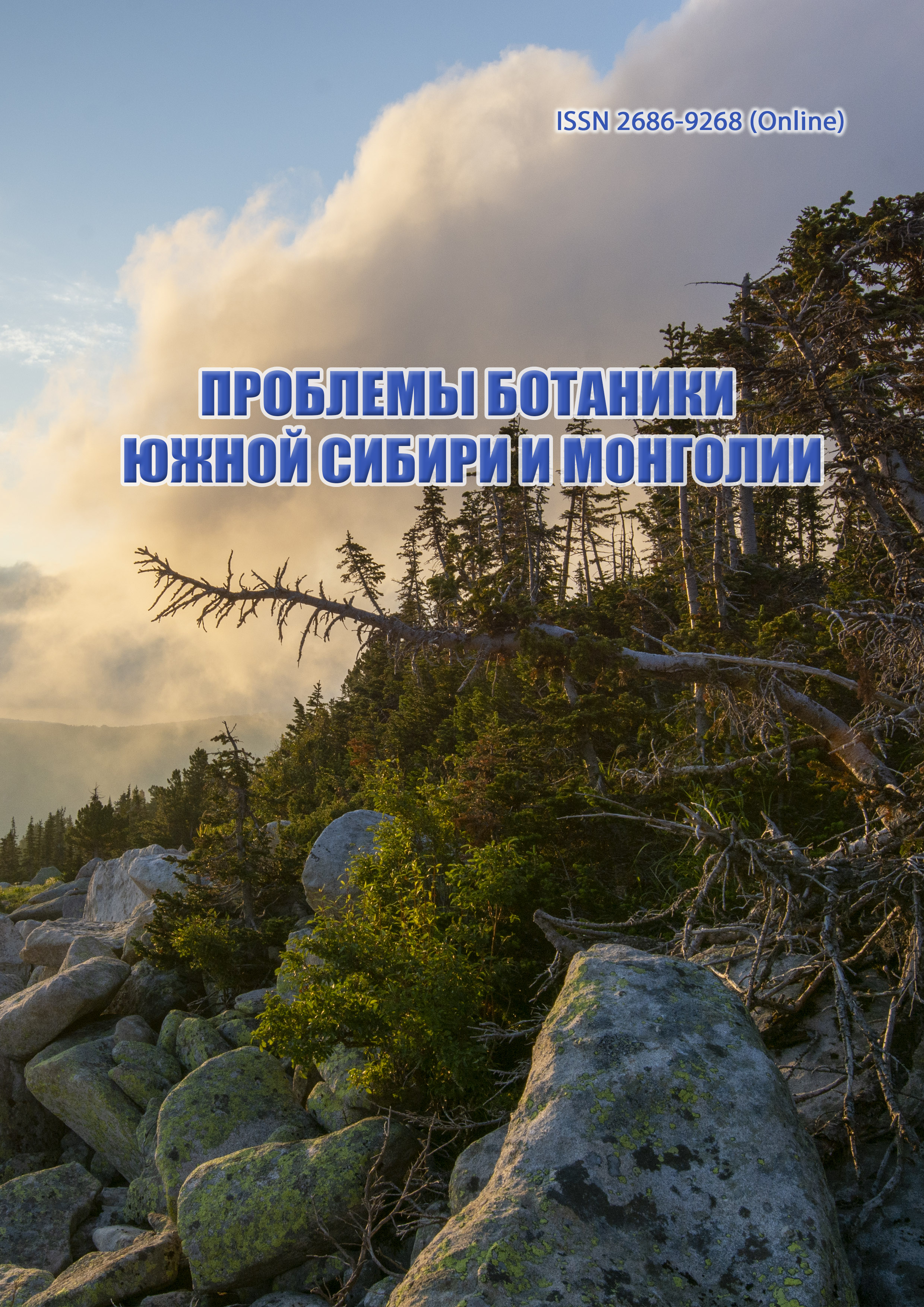Diversity of lichens, mosses and vascular plants in the paludified herb-rich spruce forests of the Pinego-Mezen watershed (Arkhangelsk Region)
УДК 574.4 + 581.93(470.11)
DOI:
https://doi.org/10.14258/pbssm.2021049Keywords:
Biological diversity, floodplains, forested mires, gradient analysis, NMS, old-growth forestsAbstract
The paludified herb-rich spruce forests of the Pinego-Mezen watershed are characterized by a high speciesand coenotical diversity. The habitat type (floodplain, stream valley, mire margin) is the main compositional gradientfor vascular plant and moss diversity. The density, basal area and proportion of spruce and deciduous species in thetree stand are less significant. The main compositional gradient of the lichen diversity is the tree stand structure, whichprovides the availability and quality of the substrate for the epiphytic and epixilic lichens that prevail in such communities.The gradient of paludified herb-rich spruce forests from floodplain habitat to mire margins is less significant for thecomposition of lichen flora.
Downloads
References
Глушковская Н. Б., Загидуллина А. Т., Корепанов В. И., Коткова В. М., Кушневская Е. В., Мирин Д. М., Столповский А. П., Филиппов Б. Ю. Ландшафтное и биологическое разнообразие на территории междуречья Северной Двины и Пинеги. – СПб.: Всемирный фонд дикой природы, 2013. – 116 c.
Евстигнеев О. И., Горнова М. В. Ельники высокотравные – климаксные сообщества на низинных болотах Брянского полесья // Russian Journal of Ecosystem Ecology, 2017. – Вып. 2 (3). DOI: 10.21685/2500-0578-2017-3-3
Красная книга Архангельской области. – Архангельск: Сев. (Арктич.) федер. ун-т, 2020. – 478 с.
Кутенков С. А., Кузнецов О. Л. Разнообразие и динамика заболоченных и болотных лесов Европейского Севера России // Разнообразие и динамика лесных экосистем России. Кн. 2. – М.: Тов-во науч. изд. КМК, 2013. – С. 152–206.
Кучеров И. Б., Кутенков С. А. Мезоэвтрофные ельники таволгово-дернистоосоковые и аконитово-таволговые сфагновые Европейской России и Урала // Самарская Лука: проблемы региональной и глобальной экологии, 2021. – Т. 30, № 2. – С. 5–24. DOI: 10.24412/2073-1035-2021-10387
Кучеров И. Б., Разумовская А. В., Чуракова Е. Ю. Еловые леса национального парка «Кенозерский» (Архангельская область) // Бот. журн., 2010. – Т. 95, № 9. – С. 1268–1301.
Пыстина Т. Н. Лишайники таежных лесов европейского Северо-Востока (подзоны южной и средней тайги). – Екатеринбург: УрО РАН, 2003. – 239 с.
Тарасова В. Н. Лишайники малонарушенных лесов верховий реки Нюхча (Пинежский район, Архангельская обл.) // Современная микология в России, 2020. – Т. 8. – С. 176–178.
Holien H. The lichen flora on Picea abies in a suboceanic spruce forest area in Central Norway with emphasis on the relationship to site and stand parameters // Nordic Journal of Botany, 1997. – Vol. 17. – P. 55–76.
Kruskal J. B., Wish M. Multidimensional scaling // Sage University Paper series on Quantitative Applications in the Social Sciences, number 07–011. Sage Publications, Newbury Park, 1978.
Kuusinen M. Importance of spruce swamp-forests for epiphyte diversity and flora on Picea abies in southern and middle boreal Finland // Ecography, 1996. – Vol. 19. – P. 41–51.
McCune B., Mefford M. J. PC-ORD. Multivariate Analysis of Ecological Data. Version 6.0. MjM Software, Gleneden Beach, Oregon, 2011.

